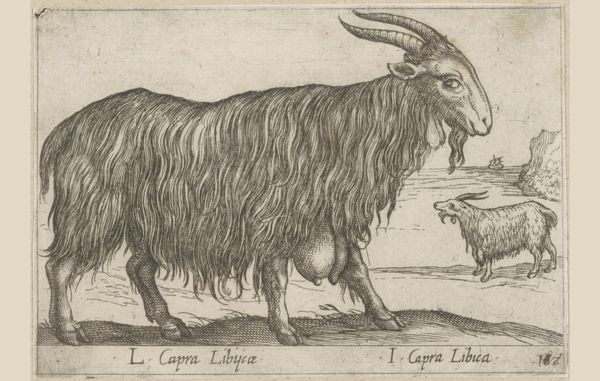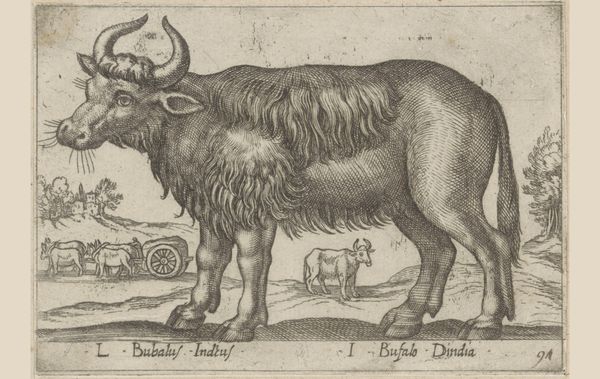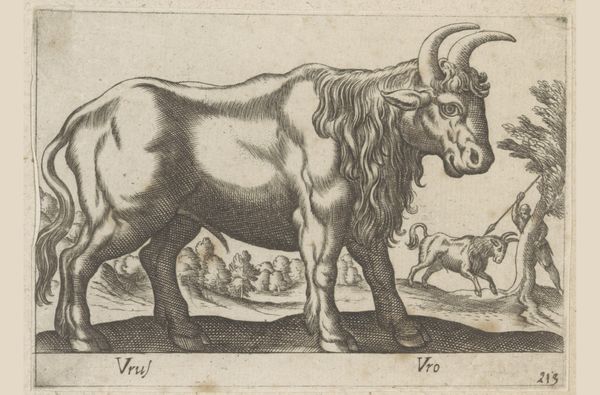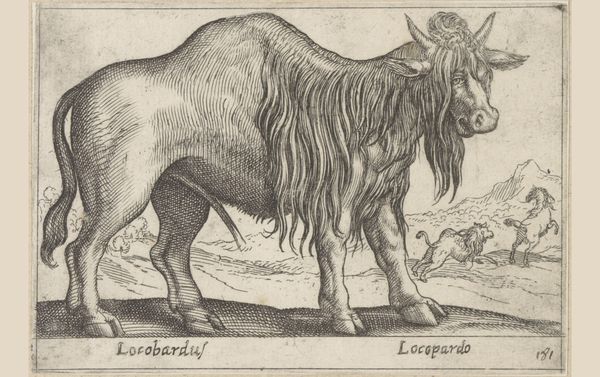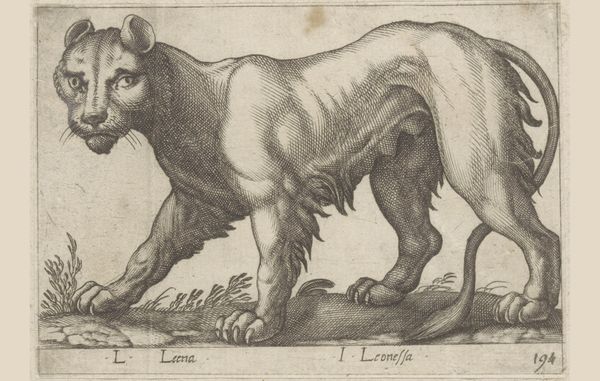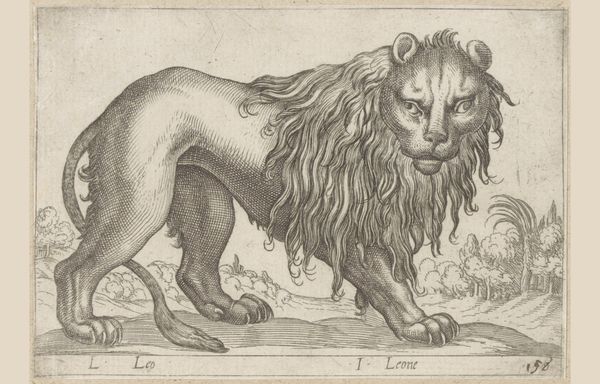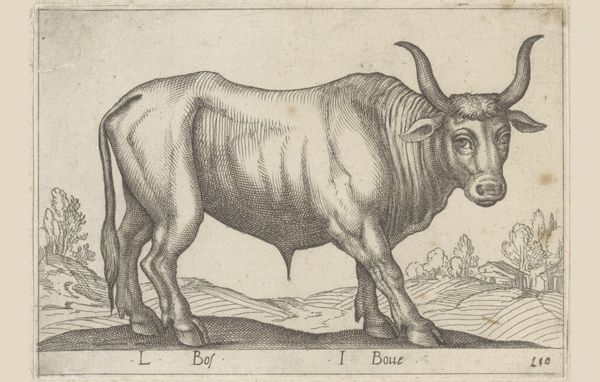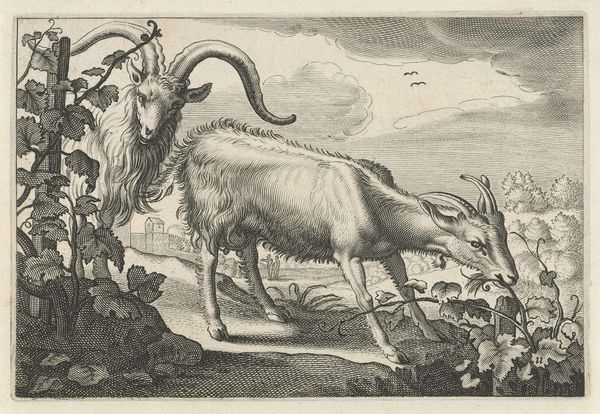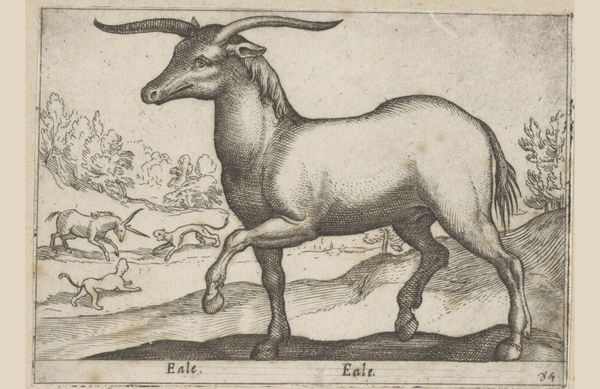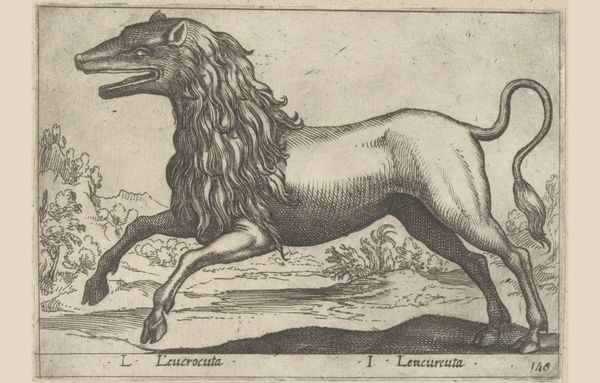
print, etching, engraving
#
animal
# print
#
etching
#
history-painting
#
engraving
Dimensions: height 95 mm, width 137 mm
Copyright: Rijks Museum: Open Domain
Curator: This etching, titled "Ram," was created by Antonio Tempesta before 1650, and we’re lucky to have it here at the Rijksmuseum. What strikes you first about it? Editor: Its presence is powerful. The ram dominates the frame, practically leaping off the surface with those strong, coiled horns. There’s a visceral, almost aggressive energy to it. Curator: That energy can be seen, perhaps, in relation to its original audience. Consider the political landscape of Europe in the mid-17th century; rife with conflict and shifting power dynamics. Could the ram represent a kind of virile, unyielding power sought by various factions? Is Tempesta, in essence, allegorizing the dominant patriarchal structures of the time? Editor: I'm more interested in the imagery that endures. Rams, throughout history and across cultures, symbolize masculine virility, determination, and leadership. The coiled horns, such a striking feature here, often represent a cycle – a return, or perhaps eternal life. Do you notice, too, the almost incidental figure milking another ram in the background? What does this unusual inversion mean, especially set in the context of history painting? Curator: Ah, now you’re moving into the realm of queer studies and gender fluidity. If we're engaging with contemporary theory, might this suggest a questioning of traditional masculine roles or even a celebration of non-binary identities within the context of agriculture and sustenance? Or, returning to Tempesta's period, we might think about how these kinds of images traveled across empires, embedding colonial views. Editor: Precisely! Visual symbols operate on multiple levels simultaneously. I see in that milking scene, the connection to ancient mythologies and rituals centered around animal husbandry, which points to deeper, often subconscious meanings tied to nourishment and power. Curator: Indeed, by analyzing not only what is shown, but also the historical power structures and theoretical lenses, we can understand not just Tempesta’s piece, but broader narratives of oppression and resilience. Editor: It's always fascinating how images evolve in our minds. What we bring with us in knowledge helps reveal their story across time.
Comments
No comments
Be the first to comment and join the conversation on the ultimate creative platform.

